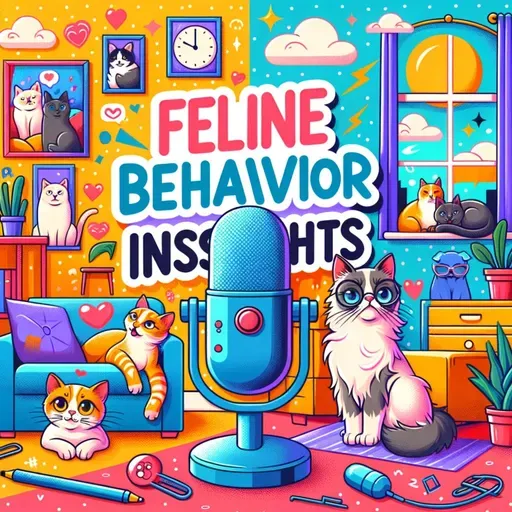
31 August 2025
"Unlocking the Language of Cats: Decoding Feline Body Cues for a Stronger Bond"
Feline Behavior Insights
About
Feline behavior is a fascinating blend of subtle cues, wild instincts, and affectionate quirks that reveal exactly how your cat is feeling and what it’s trying to communicate. According to Tuft and Paw, when trying to understand a cat’s mood, listeners should look at the overall situation, considering sights, sounds, and smells, and then narrow in on individual body language signals. Because cats evolved as both predator and prey, their behavior can switch quickly between confidence and caution. A cat stretching out or showing an exposed belly likely feels safe and relaxed, while a tense, scrunched-up posture signals stress or even pain.
Express Vets Buford reports that the tail is one of the cat’s most expressive tools for communication. An upright relaxed tail means your cat is happy and confident, while a puffed-up tail is meant to make them look larger—this is their way of communicating nervousness or agitation. A low or tucked tail is a classic sign of fear or anxiety, so giving your feline some space in these moments is best.
MedVet explains why cats might knock objects off shelves or tables: it’s about play, curiosity, and an instinct to chase. The movement of an object mimics prey, so batting something around satisfies hunting instincts and helps your cat stay mentally and physically stimulated. Kneading, another mysterious behavior, goes back to kittenhood. Pets Best suggests some experts believe kneading is a sign of comfort or a way to mark territory since cats have scent glands in their paw pads. If your cat is kneading you, that’s a sign of affection—even if sharp claws are involved.
Cats are also known to bring back “gifts” like toys or even prey. MedVet reports that this is a sign of their strong hunting instinct and an attempt to share or “provide” for their human family. It’s a quirky but endearing behavior rooted in their ancestry.
Not all cat communication is obvious, though. Cats.org.uk points out that facial expressions are subtle in cats compared to dogs, so listeners should focus on small changes like relaxed ears, blinking eyes, and loose whiskers for contentment. Slow blinking at your cat can send a friendly message, and if your cat responds likewise, it’s a sign of trust.
Wikipedia explains that play, grooming, and face rubbing aren’t just random acts—they’re part of a complex system of communication and territory marking. Cats will rub their faces against people and objects to leave their scent, marking their environment and their favorite humans.
Ultimately, learning to interpret feline body language supports a stronger bond and happier relationship. Remember, listening closely to your cat’s signals and respecting their boundaries is key to living harmoniously together.
Thank you for tuning in—don’t forget to subscribe. This has been a quiet please production, for more check out quiet please dot ai.
For more http://www.quietplease.ai
Get the best deals https://amzn.to/3ODvOta
Express Vets Buford reports that the tail is one of the cat’s most expressive tools for communication. An upright relaxed tail means your cat is happy and confident, while a puffed-up tail is meant to make them look larger—this is their way of communicating nervousness or agitation. A low or tucked tail is a classic sign of fear or anxiety, so giving your feline some space in these moments is best.
MedVet explains why cats might knock objects off shelves or tables: it’s about play, curiosity, and an instinct to chase. The movement of an object mimics prey, so batting something around satisfies hunting instincts and helps your cat stay mentally and physically stimulated. Kneading, another mysterious behavior, goes back to kittenhood. Pets Best suggests some experts believe kneading is a sign of comfort or a way to mark territory since cats have scent glands in their paw pads. If your cat is kneading you, that’s a sign of affection—even if sharp claws are involved.
Cats are also known to bring back “gifts” like toys or even prey. MedVet reports that this is a sign of their strong hunting instinct and an attempt to share or “provide” for their human family. It’s a quirky but endearing behavior rooted in their ancestry.
Not all cat communication is obvious, though. Cats.org.uk points out that facial expressions are subtle in cats compared to dogs, so listeners should focus on small changes like relaxed ears, blinking eyes, and loose whiskers for contentment. Slow blinking at your cat can send a friendly message, and if your cat responds likewise, it’s a sign of trust.
Wikipedia explains that play, grooming, and face rubbing aren’t just random acts—they’re part of a complex system of communication and territory marking. Cats will rub their faces against people and objects to leave their scent, marking their environment and their favorite humans.
Ultimately, learning to interpret feline body language supports a stronger bond and happier relationship. Remember, listening closely to your cat’s signals and respecting their boundaries is key to living harmoniously together.
Thank you for tuning in—don’t forget to subscribe. This has been a quiet please production, for more check out quiet please dot ai.
For more http://www.quietplease.ai
Get the best deals https://amzn.to/3ODvOta